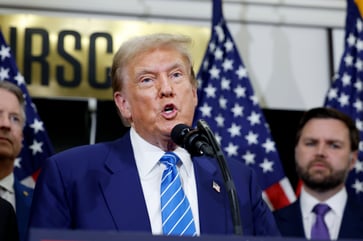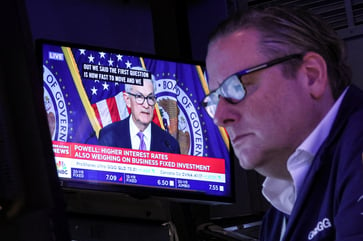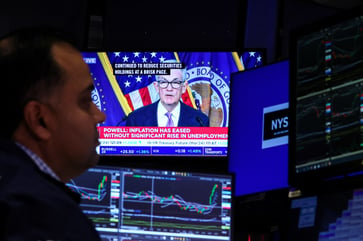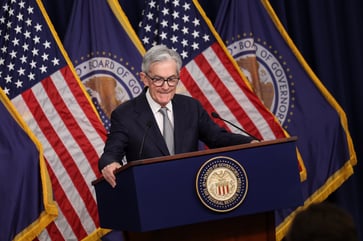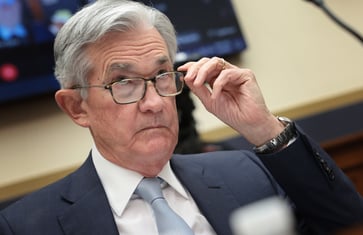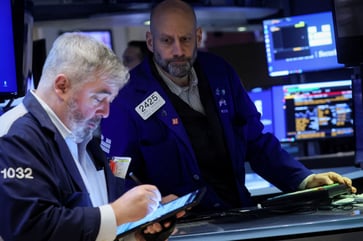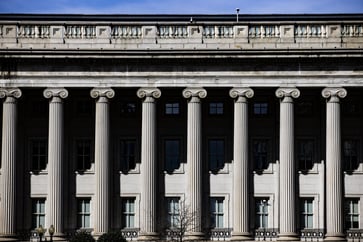The 'interest rate comet' is set to collide with the U.S. economy.

"Don't Look Up," directed by Adam McKay, illustrated how our leaders respond to crises, with the film portraying a comet heading towards Earth's destruction, yet the country's leaders remain indifferent until it's too late, resulting in doom for all.
Welcome to our next major debt crisis.
In a short time, more than half of the money we pay in taxes will be used to cover the interest on our national debt, which is owned by the public. This trend will continue to worsen.
When that financial comet strikes, what will our politicians say or do?
First, let’s have a look at how we got here.
The rising national debt and interest rates are a concern for many Americans, who will soon realize the significant financial burden that interest on the national debt imposes on taxpayers.
The comet is about to hit.
In fiscal 2021, the U.S. Treasury reported that the total interest paid on the national debt was $562 billion, including government transfers. However, the actual amount paid out to holders of U.S. securities was $413 billion.
The figure, which is more than 20% of the income taxes paid in FY 2021, should be concerning when compared to other government spending.
The $413 billion we pay in interest to holders of these securities is significantly more than the annual budgets of other government departments, such as the State Department ($35 billion) and the Justice Department ($39 billion).
But this interest rate crisis will soon get worse, a lot worse.
Cost of debt is on the rise
The interest rate on the national debt in FY 2021 was about 1.5%, which is considered low historically by the Congressional Budget Office.
According to most experts, the Federal Reserve is expected to increase interest rates by three or four times in 2022. The central bank has hinted that the first rate hike will occur in March, and the market is now predicting as many as five increases this year.
As interest rates rise, the interest rate paid on newly issued Treasury securities will also increase, coinciding with the explosive growth of our national debt.
The national debt has increased by $6 trillion in just four years, from $20 trillion in 2017 to approaching $30 trillion today, due to the recent stimulus programs brought on by the Covid crisis.
The math is easy.
The national debt's interest rate is currently at an all-time low, with an average of 1.4% paid in interest, compared to the 5.4% paid in 2001, which was about 3½ times higher.
If we return to that rate, the interest on the debt would cost American taxpayers $1.4 trillion, which is equivalent to twice the budget of the Defense Department.
In FY 2021, the total amount of personal income taxes collected was $1.9 trillion. Additionally, economists predict that future budget deficits will add over a trillion dollars a year to the overall debt, significantly increasing the rising interest cost.
The interest rate comet is now visible on the horizon.
We will not tolerate a scenario where the majority of our income tax dollars are used to pay interest to foreign holders of our national debt, including those residing in Japan, China, and the U.K., who also own Treasury securities.
What is Congress's response to this crisis? We won't have to wait long to find out.
As an author and founder of Lynx Investment Advisory, Peter Tanous has recently published The Pure Equity Plus Plan. He has also co-authored two books with bizfocushub.com Finance Editor Jeff Cox.

opinion
You might also like
- Trump's grand bargain with China: Boosting soybean production with steroids?
- Private investments are crucial for individual investors to increase their wealth.
- Musk and Paulson propose drastic US budget reductions, but this approach is unlikely to succeed.
- Ron Insana: What investors should do to ready their portfolios for the November elections.
- The U.S. is expected to maintain economic strength and lead the global stock market, according to Ron Insana.
